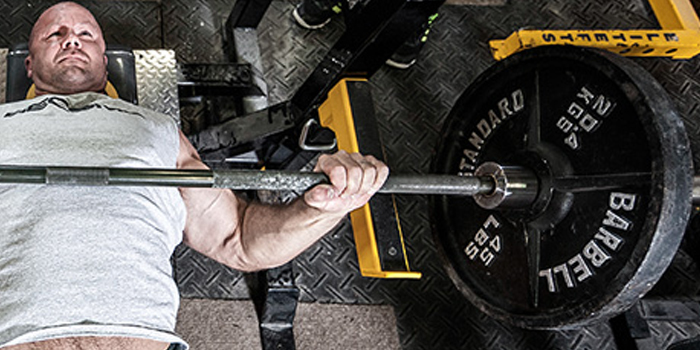
Most often, whenever you see an article coming out that’s referencing a study, it’s by someone who read the article. I recently had a thought and decided I’d come out and tell you some of the stuff myself in my own voice, in my own words, rather than in research-speak (so I guess this is more coach-speak).
For years we have done the NFL 225 Bench Press Repetitions Test. Since it is a test that is done by the NFL combine, it only makes sense to do it as a part of the program, and I completely understand that and am in agreement. Everyone, however, makes a few assumptions about it. They assume that it is a strength test, as the NFL does it to see who is stronger. It is true that cross-sectionally, those who are stronger will be able to perform a greater number of repetitions. Some (myself included) have actually developed equations that allows us to reasonably predict 1RM based off of the number of repetitions someone is able to achieve in the 225 test (3-5). There are several equations; I have provided a few references here that have a greater selection of equations. With 225 being such an emphasized test, studies have actually been done to determine what is an actual worthwhile change and isn’t just dumb luck (2) (three is the magic number by the way). Looking at the data in this way made myself and many coaches for a long time believe that the 225 test was a strength test. That’s what we were told it was, so that’s what it had to be.
RECENT: The Ladder and The Pendulum
Until we realized it wasn’t. My dissertation examined the APRE vs Linear Periodization (LP) in short-term training periods — the pilot study was actually published and available. For my dissertation, I expected everything to be greater gains for APRE than LP, as that was what was found in my pilot data as that is what the pilot data found, including 225. Whenever 225 was examined in a greater sample size, however, I was flabbergasted. I found that there was no statistical difference in the repetitions achieved in the 225 repetitions test in the APRE or LP group. They both made the exact same increase. How then, if we could go up around 18 pounds in the bench press in the APRE group in my dissertation, were we able to only increase by 1.5 reps, and the LP group didn’t increase in strength by more than about one pound on average but also increased test reps by 1.5?
I had no clue, and was worried about defending it. I actually became quite upset by what I found and was embarrassed about trying to defend it. One of my committee members has long been called Yoda by myself and many other people who are either his athletes or his colleagues. He looked at the data and said, “Bryan, you have found something and found something meaningful, even though it isn’t what you thought it was.” I didn’t get it at that point, but then weeks later it clicked.
The strength and conditioning stars and moon aligned for me to be able to look at this. What do I mean by this? I mean that instead of being at a school for two years as is average in collegiate strength and conditioning, I remained here for much longer. After this little speed bump, I started noticing something: For the athletes who were weaker, they saw great increases in 225 by simply getting stronger. By weaker, (I don’t mean this in a bad way they just possessed low levels of absolute strength, some of them had extremely high levels of mental strength) I am referring to about a 325-pound bench and below. The athletes over 325 started to be a crap shoot — some would go up, some would go down, some would stay the same. The greater the max, the more of a crap shoot it was.
I thought about it long and hard, and one day teaching about programming in my Sports Performance and Conditioning Class, I was going over a chart that just struck me like a sledge hammer between the eyes. We were going over the different rep ranges and what the effects were and a 12 repetition maximum was the end of any sort of significant strength gain. Well, if you looked at the 225 test, a 12RM would give you a predicted 1RM of 325. Why was that significant to me? Because that meant that the 225 was still a strength test for those athletes, and when they got stronger they were performing a strength test. Anything over the 12RM was seen to be either a hypertrophy or endurance exercise.
Now, logic has failed many times on many things for many people (including me quite often). I brought this to Associate Athletic Director for Athletic Performance Dr. Pat Ivey’s attention and with his blessing brought in Dr. Jerry Mayhew to look at our long-term data and see what we could find. Dr. Mayhew has been doing this a long time and has great intuition, and he saw the problem that we were explaining and he ran the analysis appropriately and found that we were right. The 225 test was a strength test for some of the team, but not all of them. Who benefitted and improved their testing results simply by getting stronger were the athletes who benched less than 325. What our findings essentially said were that yes, cross sectionally you do see those who are stronger being able to do more repetitions than someone who is weaker, but that does not mean it’s a strength test, as getting stronger did not change the results for all of the athletes (1).
RELATED: How To Increase Your 225-Pound Bench for Reps Test
Now what does this tell us? It tells us that the 225 test is a different test for different people of different strength levels. We now know for sure that it’s at least a strength and most likely an endurance test, but even that may be too simplistic. By looking at percentages of 1RM of what 225 really is, we may see some different categories. It may become a strength-speed endurance test when players get to around a 450-pound max, and a speed-strength endurance test when athletes get to low to mid 500-pound max. I don’t really know, nor am I sure if I ever truly will know. The subset of football players with 500-pound benches that I have coached is sparse, without a great enough number to get a definitive answer.
So what can be done with this information? Well maybe something, maybe nothing. Then again, maybe everything. If you are a coach who is looking to improve the results of the 225 test, then the athlete needs to be analyzed and see where they currently are and then train accordingly. At its root, if the athlete is weak, get them stronger and they will see improvements in the test. If the athlete is strong, develop their strength-endurance and you should see great improvements in the test.The strength-speed endurance and speed-strength endurance are purely theoretical, but I would put money on those two for the extremely strong athlete.
At the end of the day we need to stop and ask three questions. First, are we testing what we think we are testing? Then beyond that, are we training to improve what we are testing? Even more important, at least to me, is the final question: is what we are testing important to the sport? As Steven Covey would say, you must begin with the end in mind. Know where you are wanting to go, determine where you are, and from those two locations on the map, figure out the best route to travel. By doing this, you give your athlete the best possible results and they become strong(er) of body because you were strong(er) of mind.
References
- Mann JB, Ivey PA, Stoner JD, and Mayhew JL. Efficacy of the NFL-225 test for tracking changes in 1RM bench press following trainingin college football players. Journal of strength and conditioning research / National Strength & Conditioning Association Publish Ahead of Print, 2015.
- Mann JB, Ivey PJ, Brechue WF, and Mayhew JL. Reliability and Smallest Worthwhile Difference of the NFL-225 Test in NCAA Division I Football Players. The Journal of Strength & Conditioning Research 28: 1427-1432, 2014.
- Mann JB, Stoner JD, and Mayhew JL. NFL-225 Test to Predict 1RM Bench Press in NCAA Division I Football Players. The Journal of Strength & Conditioning Research 26: 2623-2631, 2012.
- Mayhew JL. Validation of the NFL-225 test for predicting 1-RM bench press performance in college football players. Journal of Sports Medicine and Physical Fitness 42: 5, 2002.
- Mayhew JL, Ware JS, Cannon K, Corbett S, Chapman PP, Bemben MG, Ward TE, Farris B, Juraszek J, and Slovak JP. Validation of the NFL-225 test for predicting 1-RM bench press performance in college football players. The Journal of sports medicine and physical fitness 42: 304-308, 2002.












I know if I loaded my muscles with heavy weight over 400 pounds-465 pounds the 225 pound rep test was a breeze almost like an empty bar. I would hypothesize this would result in at least 3 reps more on average per lifter.
For those that are not familliar
The NFL could use anything as a performance metric, and it may not translate into on-field performance, but it does show you who's dedicated enough to prepare for the task at hand. And that attribute may be the most important of all.